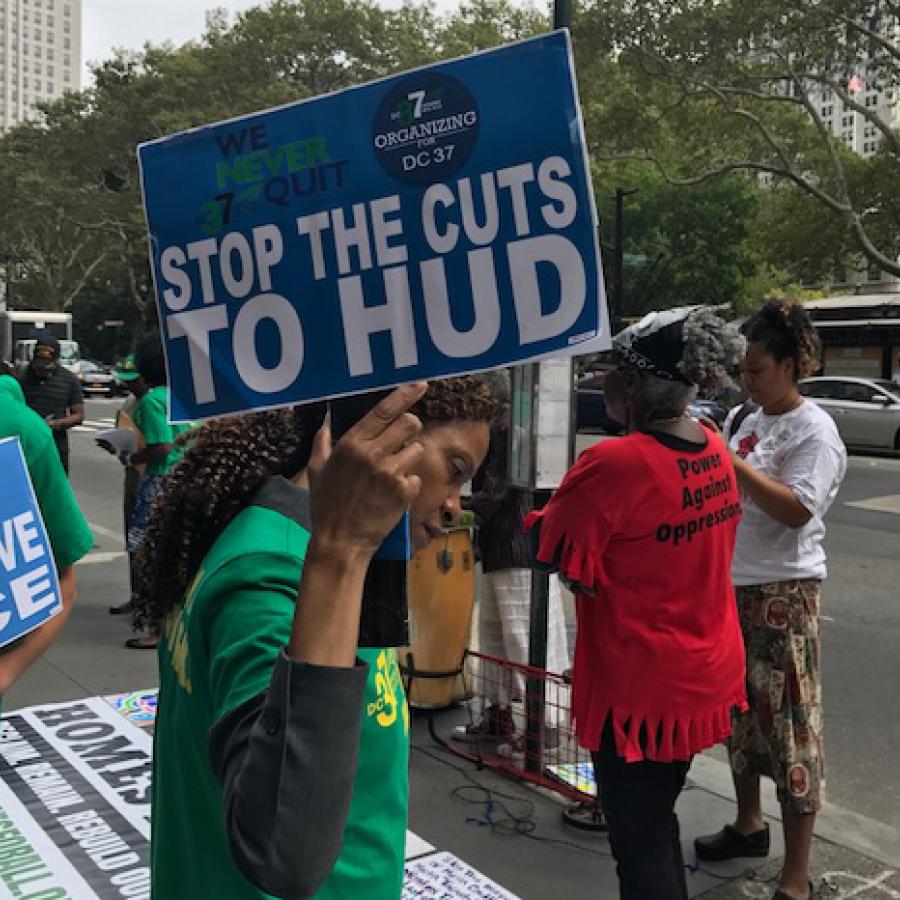Housing burden: All residents should have access to quality, affordable homes.
Insights & Analyses
- Since 2000, the share of renters who are rent-burdened has risen dramatically nationally (from 39 to 49 percent overall). At least half of renters are currently rent burdened in 53 of the 100 largest cities.
- Black and Latinx women renters are most likely to be rent burdened among all other race and gender groups.
- Florida, Hawaii, and California have the highest shares of rent-burdened renters while North Dakota, South Dakota, and Wyoming have the lowest.
- Because rent burdens are a function of costs and income, some high-cost cities that have experienced gentrification (like San Francisco) have a relatively lower share of rent-burdened residents and some lower-cost cities with large low-income populations (like Stockton) have high shares of rent-burdened residents.
- The share of homeowners who are cost-burdened has declined since 2010 (from 30 to 22 percent), partly because the foreclosure crisis turned many homeowners into renters. Black and Latinx homeowners are still the most likely to be cost-burdened of all racial groups.
Drivers of Inequity
Lack of affordable housing production coupled with skyrocketing housing prices and stagnant wages for low-wage workers has caused the housing burden for poor Americans, particularly low-income renters, to increase following the recovery from the 2008 crisis. People of color are over-represented in these populations; this is due in part to a long history of racial segregation forged through practices such as racially restrictive housing covenants, redlining, and discriminatory lending. People of color are also more likely to rent than own a home because historical dispossession and discrimination have prevented accumulation of wealth and upward mobility.
Strategies
Grow an equitable economy: Policies to ensure affordable housing for all
- Raise funds to increase the supply of affordable homes through housing trust funds and housing bonds.
- Require or incentivize the inclusion of affordable housing within new developments using inclusionary zoning, community benefits agreements, density bonuses, or other tools.
- Preserve affordable rental housing, particularly apartments located near job centers, public transit, and services.
- Ensure strong tenant protections to prevent displacement, such as just cause eviction ordinances, anti-harassment policies, low-cost legal assistance, and rent control
- Implement a renters' tax credit to help reduce rents for low-income families.
- At the federal level, create a rental subsidy program for rent-burdened tenants, enforce and expand the Fair Housing Act to ensure fair housing, expand the national Housing Trust Fund to increase investment in affordable housing production.
Strategy in Action
Affordability is secured for generations in Boston's South Dorchester community. For over 40 years, Boston's Codman Square Neighborhood Development Corporation (CSNDC) has been working to build a stronger South Dorchester community area through affordable housing and commercial development, economic inclusion, transit equity, and deep resident engagement. For much of the 20th century, Dorchester was home to many working-class European immigrants and Black Americans who were restricted from buying or renting homes in Boston’s all-Anglo neighborhoods. Many of the neighborhood’s current residents – including more recent immigrants from Africa, Asia, and Latin America – still struggle with income disparity and housing unaffordability. Since its founding in 1981, CSNDC has transformed many of the neighborhood’s blighted properties into homes and local businesses. The organization has built over 1,400 housing units, created homes for nearly 4,000 residents, and manages multiple commercial properties for small business development. In addition, CSNDC offers an array of direct services, like workforce training, financial counseling, and homebuyer education, to help working families grow their assets and build financial security. Read more.

Resources
- Reports: Housing Policy Guide; Racial Disparities Among Extremely Low-Income Renters; Who Has Housing Affordability Problems? Disparities in Housing Cost burden by Race, Nativity and Legal Status in Los Angeles
- Data: Out of Reach; Paycheck to Paycheck; Mapping Inequality: Redlining in New Deal America
- Toolkits: #OurNeighborhoods





